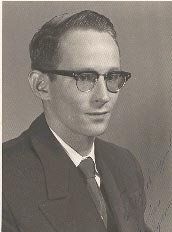|
My introduction to the community of Lepanto came in the fall of 1951 when I arrived in town to join the faculty of Lepanto High School. I was only 20 years old, and I am sure that my goals, if I had any, did not include remaining here for 50 years. But each yar I bacame more and more involved with school and community affairs, resulting a protracted stay in Lepanto.
My arrival in Lepanto on that hot Sunday afternoon was a revelation in itself. I had come from a very conservative background; from a community where few people ventured out on Sunday afternoon. I found Lepanto's Main Street gorged with people bustling about in a carnival atmosphere, having their day of recreation before returning to the fields the next day. Little did I realize that I was witnessing the last of a long-standing era in northeast Arkansas. Soon machines would replace the workers in the fields, and the weekend crowds on Main Street wold disappear. There would be an exodus of people with its stern effects on businesses, schools, and churches.
Although I was not trained to be a teacher, I began my first day with a lot of confidence that somehow had disappeared before the end of the day. I realized right away that I knew very little about the realities of teaching practices or school operation. Being only 20 years old and weighing about 115 pounds made it difficult to establish any kind of identity as a teacher. With the help and support of adminstrators J.D. McGehee and Max Hefley and a sympathetic faculty, I managed to survive the perils of a first science teacher and decided to give it a second try.
That first year of teaching was certainly a memorable experience. I remember those times with fondness and often with a sense of wonder and awe. I realize now that I was building bonds with students that would in time become bonds of neighbors, colleagues, and parents of latter-day students. About half way through my career, my typical class was made up mostly of children of my former students. I have lost contact with most of my teaching colleagues of thos days.
I am sure that many of them are deceased, but I wish we had stayed in better contact. I recall Bob Latham, Lawrence Baskin, Mrs Hubbell, Ruby Langley, Laura McGaugh, Joe Wilson, and others that I have no idea of where they are.
One characteristic of the Lepanto schools that was entirely new to me was the emphasis given to student activities. During my own high school and college carees, students activities were rather subdued. I was literally swept away over the excitement of Terrapin Derby, building floats, decorating for dances, and most of all, the senior trip and raising money for it. At times these activities were regarded as distractions to the educational process, but I have later come to view them as excellent vehicles for developing teamwork, responsibility, and school-community spirit. It was through these activities that I really learned students as personalities and I developed deep appreciation for them.
|
|



